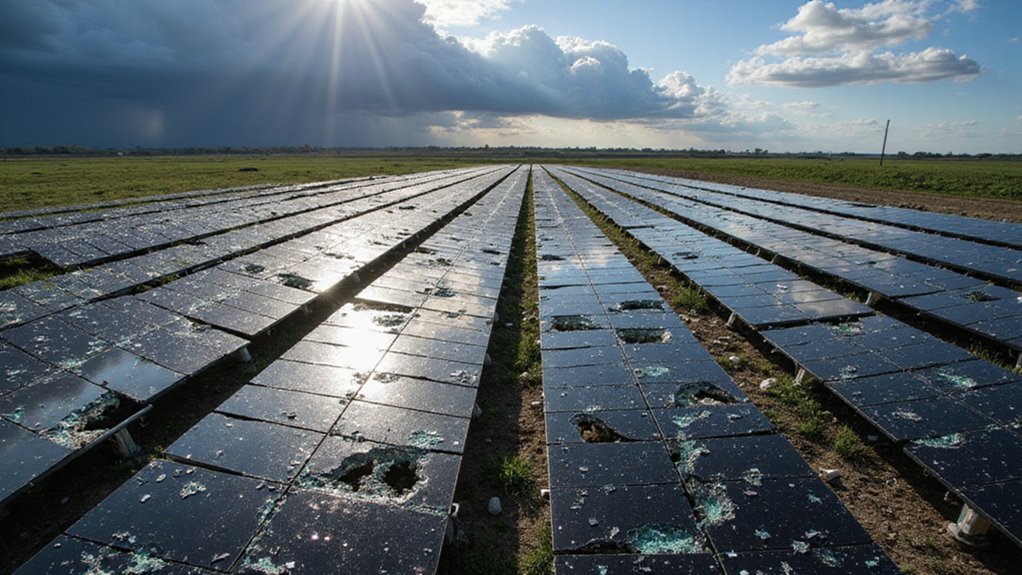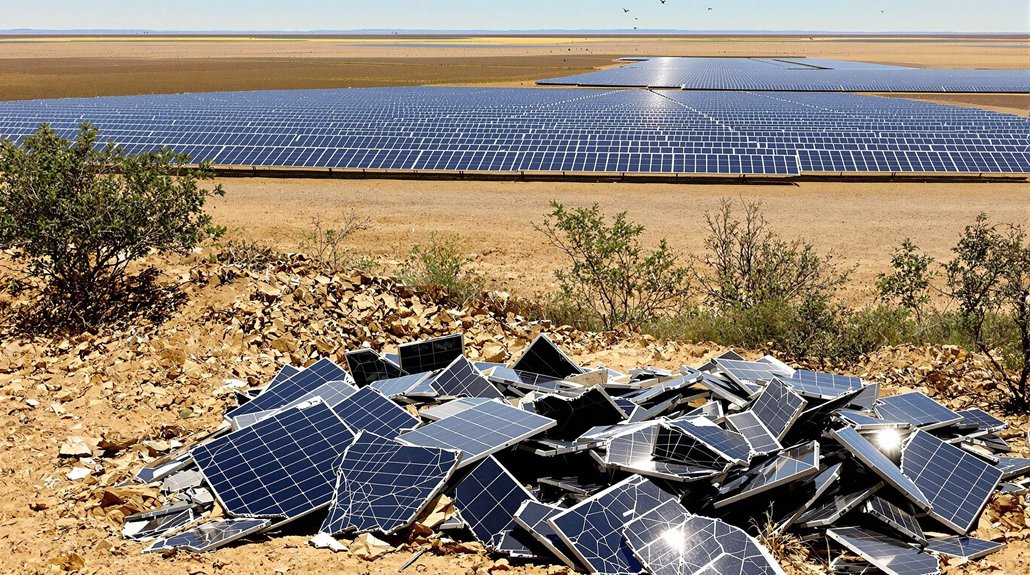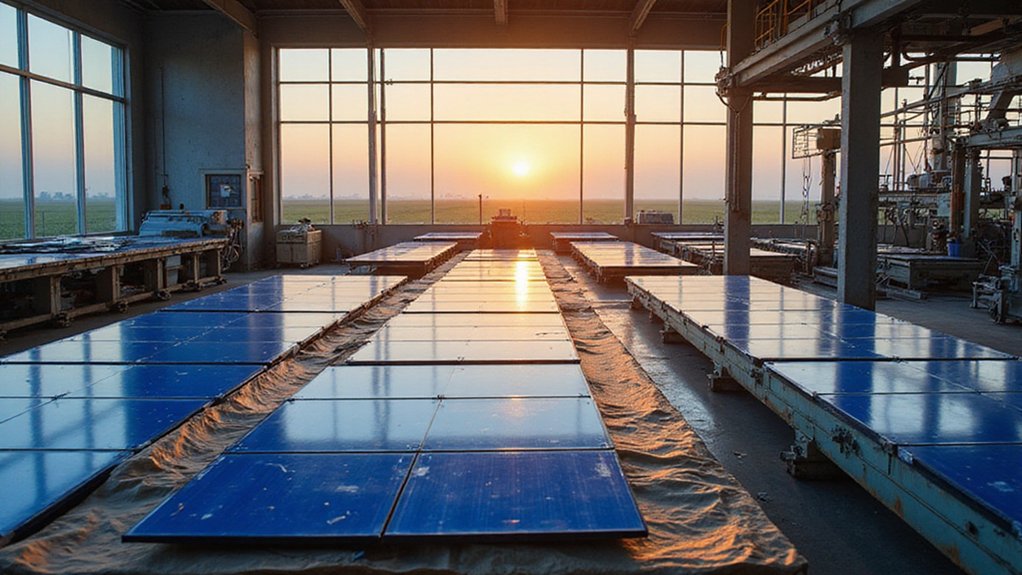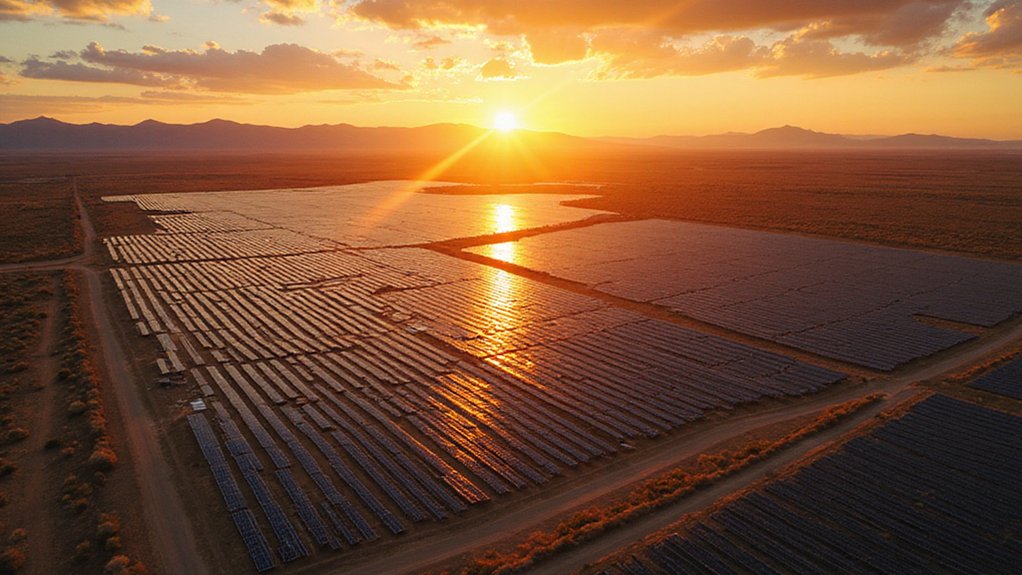While solar farms quietly generate clean energy across America’s sunbeds, hailstorms are smashing them to pieces—and the financial damage is staggering. Despite causing only 6% of weather incidents at solar installations, hail drives a whopping 73% of total financial losses. That’s not a typo. Six percent of problems, three-quarters of the money gone.
The numbers are brutal. Average hail claims now hit $58.4 million each, accounting for over 54% of all solar insurance costs. Individual events range from $5 million to $80 million in damage. Remember the 2019 Midway Solar disaster in Texas? That single hailstorm generated $70-80 million in insurance claims. The 2024 Fighting Jays solar farm incident? Remediation costs are projected to reach hundreds of millions.
Average hail claims hit $58.4 million each, accounting for over 54% of all solar insurance costs.
Texas alone has eaten over $600 million in hail-related solar losses since 2018. The state’s become ground zero for this expensive problem, partly because developers keep building in hail-prone areas with sketchy weather data. Remote locations often lack proper weather records, making risk assessment a guessing game. Insurance companies love that. Making matters worse, 99% of US PV plants face at least a 10% chance of encountering hailstones over 2 inches in diameter annually.
When hail hits, it hits hard. Golf ball to grapefruit-sized stones don’t just crack panels—they obliterate them. The Midway Solar project saw 58% of its 685,000 modules damaged in one storm. Shattered glass, microcracks, delamination. The works.
And fixing this mess isn’t just about swapping panels. There’s racking damage, system downtime, and months of lost production. The financial pain extends beyond repair bills. Projects face liquidated damages from broken power agreements, legal battles with insurers, and costs that insurance won’t touch. Future premiums skyrocket. Some projects never recover financially.
The industry’s scrambling to respond. Insurance providers are tightening coverage and jacking up rates after renewable energy losses hit $300-400 million in 2022. Risk models clearly missed the mark on hail damage potential. Now everyone’s paying for it. Even supposedly low-risk regions are getting hammered—North Carolina accounted for 19% of hail losses despite its safer reputation. These setbacks come at a critical time when renewable energy accounts for merely 11% of the global energy mix, hampering our transition away from fossil fuels.
As more solar farms sprout in hail country, this problem’s only getting worse. The clean energy transformation meets Mother Nature’s frozen artillery, and Mother Nature’s winning.
References
- https://www.pv-tech.org/hail-causes-70-financial-losses-for-us-pv/
- https://www.pv-magazine.com/2025/06/11/hail-risk-remains-top-issue-faced-by-solar-projects/
- https://www.jsheld.com/insights/articles/solar-farm-hail-damage-the-perfect-storm
- https://www.solarpowerworldonline.com/2023/12/gcube-report-says-hail-damage-now-accounts-for-54-of-solar-loss-claims/
- https://pv-magazine-usa.com/2024/07/31/hail-risk-may-bring-financial-instability-to-solar-projects/








